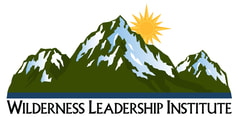Snowpack Summary November 7, 2022
Posted by Allen Giernet @ (this summary expires in 24 hours)
This summary applies to backcountry areas only.
The Bottom Line –
Pre Season update - With the first significant storm approaching and forecast amounts ranging from 7" to 40"+ depending on range and forecasting agency it is time to get your avi savy mindset. Information at this time is very limited so remember "If Theres Enough Snow To Ride Theres Enough Snow To Slide".
Early season will pose many hazards besides avalanches regardless of your mountain activities rather it be a hike, snowshoeing or skiing/ boarding. Exposed obstacles and low tide conditions should be on your mind. Warming cycles follow by cold spells create firm fast and icy conditions very often in our mountains, a slip and fall in these early season conditions can be catastrophic as slide for life scenarios are some of our biggest rescue situations. Early season snowfall also brings the foundation for our base and can be the future weak layer depending upon conditions. Watch weather conditions and keep track on what is happening in the snowpack starting now and following the trends all season will help prepare you to make more informed decisions.
During this period as we wait for the snowpack to develop it is a great time to:
Check all your gear, avalanche transceivers, check for updates and recalls.
Check your shovels and probes to make sure they are all functioning properly.
Check all your backcountry travel equipment, skis, boards, snow shoes, skins poles etc.
Brush up on your avalanche training or look into booking an avalanche course. There are many avalanche awareness programs throughout the country and many are virtual and free.
Avalanche education courses fill up fast so it's not too early to book your class.
SCSAC will begin posting weather forecasts later this month and snowpack summaries once we have a snowpack developed. Currently we are busy working on programming and will be updating the website soon with education opportunities and information. In the mean time please share any information when you are out in the mountains. Even a photo is helpful.
Please share your observations with us at the avalanche center Submit Reports page.
Posted by Allen Giernet @ (this summary expires in 24 hours)
This summary applies to backcountry areas only.
The Bottom Line –
Pre Season update - With the first significant storm approaching and forecast amounts ranging from 7" to 40"+ depending on range and forecasting agency it is time to get your avi savy mindset. Information at this time is very limited so remember "If Theres Enough Snow To Ride Theres Enough Snow To Slide".
Early season will pose many hazards besides avalanches regardless of your mountain activities rather it be a hike, snowshoeing or skiing/ boarding. Exposed obstacles and low tide conditions should be on your mind. Warming cycles follow by cold spells create firm fast and icy conditions very often in our mountains, a slip and fall in these early season conditions can be catastrophic as slide for life scenarios are some of our biggest rescue situations. Early season snowfall also brings the foundation for our base and can be the future weak layer depending upon conditions. Watch weather conditions and keep track on what is happening in the snowpack starting now and following the trends all season will help prepare you to make more informed decisions.
During this period as we wait for the snowpack to develop it is a great time to:
Check all your gear, avalanche transceivers, check for updates and recalls.
Check your shovels and probes to make sure they are all functioning properly.
Check all your backcountry travel equipment, skis, boards, snow shoes, skins poles etc.
Brush up on your avalanche training or look into booking an avalanche course. There are many avalanche awareness programs throughout the country and many are virtual and free.
Avalanche education courses fill up fast so it's not too early to book your class.
SCSAC will begin posting weather forecasts later this month and snowpack summaries once we have a snowpack developed. Currently we are busy working on programming and will be updating the website soon with education opportunities and information. In the mean time please share any information when you are out in the mountains. Even a photo is helpful.
Please share your observations with us at the avalanche center Submit Reports page.



















